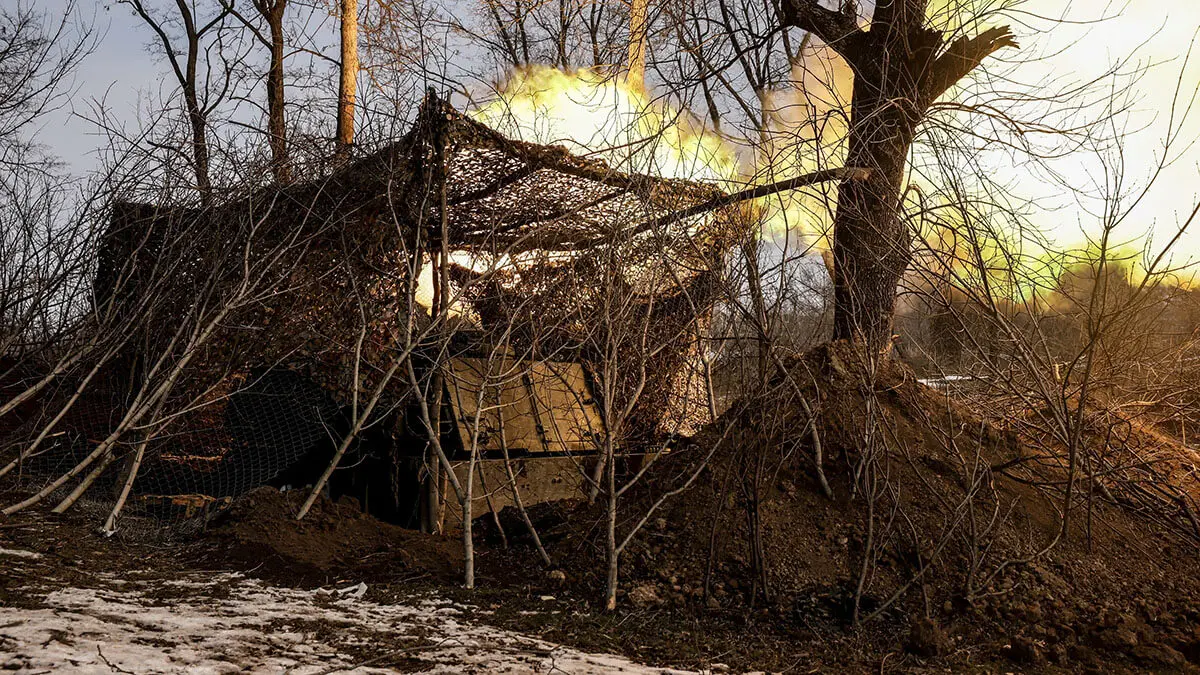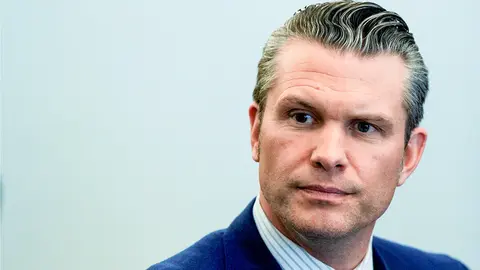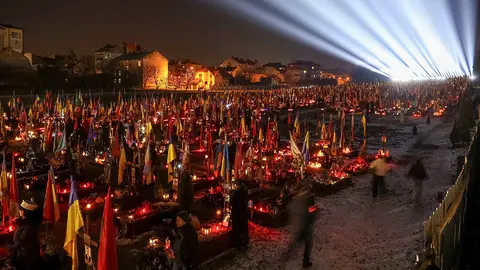Achieving a ceasefire is now a labyrinth with no exit

In 2008, the Russian army invaded Georgia and took 20% of its territory; then, in 2014, it encouraged the self-proclamation of independence of Crimea, which is Ukrainian territory; and, on 24 February 2022, it decided to invade Ukraine (again) and is about to take over 20% of the occupied territory.
And, if it does, it will also have the backing of the US president himself. Trump has already openly stated that he is seeking a pact for a ceasefire negotiated directly with Putin. He also intends to push the Ukrainian president to sign an agreement drawn up by Washington to exploit a series of valuable resources such as gas, oil and rare earths, as well as to have preference for the reconstruction of Ukraine.
This agreement, which in principle was a bill that Trump had estimated at 500 billion dollars that Ukraine had to pay him one way or another, has been transformed into an economic cooperation agreement in which the United States and its multinationals have preference in areas such as the exploitation of rare earths.
In statements made by the president, Volodymyr Zelensky, the conditions have been improved in comparison with the draft that the Treasury Secretary, Scott Bessent, presented to him in Kiev a few weeks ago.
‘An important point is that it no longer refers to Ukraine as a debtor nation... there is no figure for the amount owed: not 350 or 500 billion dollars,’ explained the Ukrainian leader.
Instead, it deals with the creation of a fund to which Ukraine will contribute 50% of the income derived from the future monetisation of its resources such as rare metals or oil, but only from those that are not yet being exploited. There is also no other clause relating to the requirement that the invaded country pay double for reconstruction investments made by US multinationals.
Zelensky, who constantly insisted on giving up the exploitation of rare earths, gas and oil in exchange for Washington's commitment to ensure his security, has not managed to get Trump to give in; the three-way fight has been highly significant. The tycoon is motivated by ambition, not a sense of history.
In the Republican's view, the mere presence of American companies and workers on Ukrainian soil extracting metals or gas and oil would provide ‘automatic security’ for Ukrainians and prevent them from being attacked again. ‘We're going to do a great, great deal.’
According to the BBC, Ukraine is a country rich in natural resources. Kiev estimates that around 5% of the world's critical raw materials are in its soil. Above all, it has a lot of lithium used in the aerospace, defence and nuclear industries; however, these resources will not be entirely easy to access.
Some of the mineral deposits are in occupied regions. According to Yulia Svyrydenko, Ukraine's Minister of Economy, there are resources worth approximately 350 billion dollars in the territories invaded by the Russians.
In an intelligent manoeuvre, the Kremlin announced that it was willing to reach an economic agreement with the United States to give it access to the exploitation of rare minerals within the territories of Donetsk, Lugansk, Kherson and Zaporizhzhia.
Nor will their exploitation be quick. James Gregory told the BBC that at least a quarter of Ukrainian territory is full of landmines, mainly in the east of the country.
The issue of these possible economic alliances will most probably be included in the Moscow-Washington negotiations, contact for which was reactivated at the first meeting in Riyadh between the US Secretary of State, Marco Rubio, and his counterpart, Sergei Lavrov.
Diplomatic delegations met again in Istanbul on 27 February to resume the re-establishment of contacts and diplomatic relations between the embassies in Moscow and Washington, respectively.
Reconstruction on the horizon
The Washington-based Institute for the Study of War reports that Russian forces advanced at an average rate of 27.94 square kilometres per day in November 2024; 18.1 square kilometres per day in December 2024; and 16.1 square kilometres per day in January 2025.
Furthermore, he points out, most Ukrainian cities have not been destroyed. Many of Ukraine's largest cities, including Kiev, Lviv, Dnipro and Odessa, have avoided destruction and are still functioning.
‘Russia has razed some Ukrainian cities as it has attacked and occupied them, such as Mariupol. The 80% of Ukraine's cities that have not been occupied by Russian forces have remained largely intact during the Russian invasion, apart from deliberate Russian attacks on critical infrastructure and civilians,’ the organisation points out.
President Trump wants his multinationals to be ‘on site’ rebuilding the destroyed infrastructure and erecting large real estate complexes. He claims the right of preference for being, as he has declared, the country that has given the most money to Kiev in economic and military aid.
This is incorrect for Europe, as it is for Kiev. The Institute for the Study of War itself clarifies that Europe (including members of the European Union and the United Kingdom) has surpassed the United States in terms of cumulative allocations of direct military and non-military aid to Ukraine.
'Europe has provided Ukraine with a total of 166 billion dollars in cumulative aid and has pledged an additional 34.7 billion dollars to be allocated until 2030. Europe has provided and pledged approximately 204.1 billion dollars in total: more than 174 billion dollars from the EU; some 13.9 billion dollars from Norway and 16.2 billion dollars from the UK, compared to 183 billion dollars from the US,’ said the renowned think tank.
These figures do not include the EU and G7 commitments to grant loans to Ukraine financed with the income generated by frozen Russian assets. European loans to Ukraine are backed by income from frozen Russian assets, not Ukrainian ones.
The EU has approximately 220.5 billion dollars in frozen Russian assets; of these, the EU has already made 1.6 billion dollars of frozen Russian assets available to Ukraine and disbursed 3.2 billion dollars in loans last January.
The Institute for the Study of War points out that Ukraine has not misused the money, nor has it diverted the aid provided by various US institutions.
However, Trump is clinging on to the idea of extorting money from Kiev. And he claims the maximum and privileged right to be the reconstructor, even though, for sure, 90% of the destruction is in the territories occupied by the Russians. Will the United States reconstruct these occupied territories? That would have to be part of a negotiation with Putin.
Of course, the Russian dictator is not at all happy that Trump wants to put both economic and imperialist feet of the United States in Ukraine. The message is clear to Putin: Russia will not be the only one doing business.
Meanwhile, the EU, which is using the frozen Russian assets as collateral for the money it has given to Ukraine, is more focused on having guarantees of security and peace. This is its main concern and mantra because all the intelligence services from the UK to Poland and Slovenia warn that Putin will invade other countries such as Georgia, Moldova, the Baltics and Poland.



